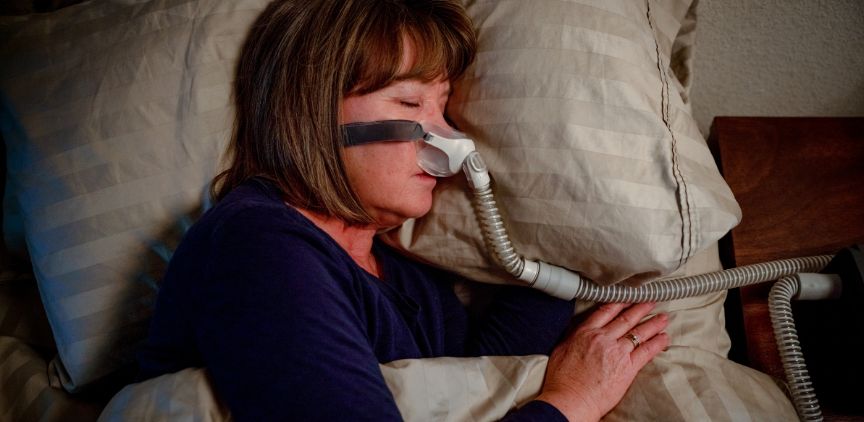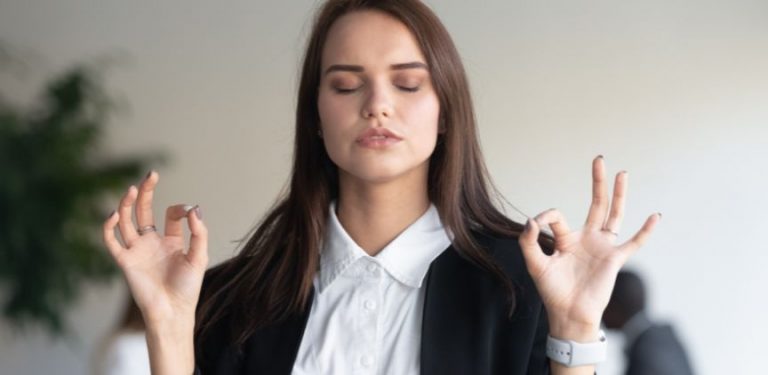Solutions for Restful Nights
Sleep apnea is a common sleep disorder that affects millions of people. It is characterized by repeated pauses in breathing or shallow breaths during sleep, leading to disrupted and poor-quality sleep. Sleep apnea can have serious consequences for one's overall health and well-being if left untreated. However, there are various treatment options available, including lifestyle changes, medical interventions and the adoption of specific sleeping positions. In this article, we will explore what sleep apnea is, its signs and symptoms, the available treatments and the best sleeping position for sleep apnea to alleviate its impact.
What is Sleep Apnea?
Sleep apnea occurs when the muscles in the throat relax and obstruct the airway, leading to breathing difficulties during sleep. The two most common types of sleep apnea are obstructive sleep apnea (OSA) and central sleep apnea (CSA). OSA, the more prevalent type, occurs when the airway becomes blocked due to the collapsing of soft tissues in the throat. CSA is caused by the brain's failure to signal the muscles to breathe.
Signs and Symptoms of Sleep Apnea
Here are some common signs and symptoms of sleep apnea.
- Loud, chronic snoring: Snoring is a common symptom of sleep apnea, particularly in obstructive sleep apnea cases. The snoring is often loud, disruptive and may be accompanied by gasping or choking sounds.
- Excessive daytime sleepiness: Individuals with sleep apnea often experience excessive daytime sleepiness, even after seemingly getting enough sleep at night. This can lead to difficulties concentrating, fatigue and decreased productivity.
- Frequent awakening during sleep: Sleep apnea interrupts the normal sleep cycle, causing individuals to awaken abruptly throughout the night. These awakenings are often accompanied by a sensation of choking or gasping for air.
- Morning headaches: Sleep apnea can cause morning headaches due to the disrupted oxygen supply during sleep, leading to increased blood pressure and tension in the head.
- Irritability and mood swings: The lack of quality sleep associated with sleep apnea can lead to irritability, mood swings and a decreased ability to cope with daily stressors.
Related Search Topics (Ads)
Treatment Options for Sleep Apnea
Treatment for sleep apnea depends on the severity of the condition and the individual's specific needs. Some common treatment options include:
- Continuous Positive Airway Pressure (CPAP): CPAP therapy involves wearing a mask over the nose or mouth during sleep, which delivers a constant flow of air pressure to keep the airway open.
- Oral appliances: These devices are custom-made and fit into the mouth, helping to keep the airway open during sleep.
- Lifestyle modifications: Certain lifestyle changes can significantly improve sleep apnea symptoms. These include maintaining a healthy weight, exercising regularly, avoiding alcohol and sedatives and choosing optimal sleeping positions.
Best Sleeping Positions for Sleep Apnea
While sleep position alone cannot cure sleep apnea, adopting certain positions can help alleviate symptoms and improve the quality of sleep. Here are the best sleeping positions for sleep apnea.
1. Side Sleeping (Lateral position)
Sleeping on your left or right side can help keep the airway open and reduce the likelihood of tongue and throat tissues obstructing the air passage. Use a supportive pillow to maintain proper spinal alignment and elevate your head slightly to promote easier breathing. Placing a pillow between your legs can help to make the position more comfortable.
2. Elevated Head Position
Elevating the head during sleep can help prevent the tongue and soft tissues in the throat from collapsing into the airway. This can be achieved by using a wedge pillow or propping up the head of the bed by a few inches. Consider purchasing an adjustable bed that has multiple settings that will allow you to find the best and most comfortable, elevated sleeping position.
What About Stomach Sleeping (Prone Position)?
While there are some cases where specific individuals find relief from sleep apnea symptoms in the prone position, it is generally advised to avoid this sleeping position. Sleeping on your stomach can cause increased pressure on the chest and abdomen, which can compress the diaphragm, restrict the airflow to the lungs and can further contribute to the obstruction of the airway. Instead, side sleeping or sleeping with an elevated head position is considered more beneficial for individuals with sleep apnea.
Avoid Sleeping on Your Back (Supine Position)
Sleeping on your back can worsen sleep apnea symptoms as it allows gravity to pull the tongue and soft tissues backward, obstructing the airway. To discourage back-sleeping, try placing a pillow or rolled-up towel behind your back, preventing you from rolling onto your back during sleep.
How Cushions and Mattresses Can Help
Cushions and mattresses can play a supportive role in managing sleep apnea. While they cannot cure sleep apnea on their own, they can contribute to better sleep quality and potentially alleviate some symptoms. Here are a few ways cushions and mattresses can help:
- Comfortable positioning: Certain cushion designs, such as cervical pillows or contour pillows, can help promote proper alignment of the head, neck and spine. This can assist in keeping the airway open and reducing the likelihood of obstructive sleep apnea (OSA) events caused by relaxed throat muscles or tissue collapse.
- Pressure relief: Mattresses with good pressure relief properties, such as memory foam or latex mattresses, can help distribute body weight evenly and reduce pressure points. By minimizing discomfort, these mattresses may contribute to a more relaxed and uninterrupted sleep, potentially reducing the frequency of apnea events.
- Adjustable beds: Some mattresses can be paired with adjustable bed frames, allowing you to elevate the upper body or raise the legs. Sleeping with the upper body slightly elevated can help alleviate symptoms of OSA by reducing the effects of gravity on the airway, making it easier to breathe and reducing the occurrence of apnea episodes.
Some Top Brands to Consider
Cariloha, Blissy, and Coyuchi are popular brands that offer a range of mattresses and cushions. Here's a brief overview of each brand and their products:
- Cariloha: Cariloha specializes in products made from bamboo-derived materials. They offer mattresses, pillows and mattress toppers. Bamboo-based products from Cariloha are known for their softness, breathability and moisture-wicking properties. Their mattresses and pillows may offer comfort and breathability, which can contribute to a better sleep environment.
- Blissy: Blissy is a brand that focuses on silk products, including silk pillowcases and eye masks. Silk is known for its smooth texture and hypoallergenic properties. While silk pillowcases may not directly address sleep apnea, they can provide a comfortable and gentle surface for your face, reducing friction and potential irritation. An eye mask may also help create a darker sleep environment, promoting better sleep.
- Coyuchi: Coyuchi is known for its organic and sustainably made bedding products. They offer mattresses, mattress toppers and pillows made from natural materials like organic cotton, organic wool and natural latex. These materials are often chosen for their breathability, comfort and eco-friendliness.
Final Notes
Sleep apnea can significantly impact an individual's quality of life, but with the right treatment and lifestyle modifications, its symptoms can be effectively managed. While adopting the best sleeping positions alone may not cure sleep apnea, they can provide relief and improve sleep quality. It is essential to consult with a healthcare professional for an accurate diagnosis and to discuss suitable treatment options based on the severity of your condition.

